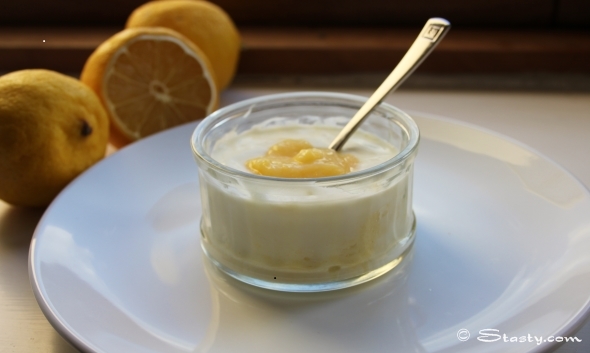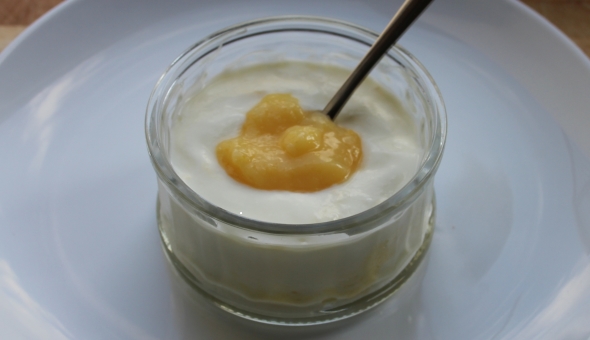
Last week was my first foray in the yoghurt making business. And I have to say I was a little sceptical to begin with. The yoghurt making contraption arrived via mail order and looked disappointedly low tech! It was basically a plastic flask with a plastic jar that fit inside. Hmmm. Anyway, undeterred I went off and purchased my milk, milk powder and natural yoghurt! Hang on, you need yoghurt to make yoghurt??? Yes, I discovered you do indeed need yoghurt, however you only need two tiny teaspoons of it to make a huge two litre flask of yoghurt and you can use your own homemade yoghurt as a starter for your next batch. Making yoghurt is relatively straight forward though it does take a bit of time to make (8 hours of waiting to be precise.) However, if you make it in the evening, and leave overnight it will be ready for use the next day. (Bit warm for breakfast, need to cool a bit before eating). The yoghurt I made was so creamy and silky and tasted less acidic than some shop bought natural yoghurt. I added a dollop of home-made lemon to curd to mine which made this a really creamy, zingy and refreshing dessert.
You don’t need to have any particular yoghurt making device to make yoghurt, you can use a large earthenware bowl covered with clingfilm and leave in a warm spot. You will however need an accurate thermometer. This recipe was taken from Darina Allen’s Forgotten Skills of Cooking and she in turn borrowed this recipe from Eddie O’Neill a food specialist for The Dairy Research Station in County Cork.
Here’s how:
– 2 litres full cream milk
– 50g of skim milk powder
– 2 teaspoons of very fresh, live natural yoghurt (I used Glenisk)
Begin by heating the milk in a saucepan. When it becomes lukewarm add in the milk powder. Continue to heat until the milk becomes frothy and reaches 90 degrees Celsius. Check for the temperature on your thermometer.
Take off the heat immediately and leave to cool for about fifteen minutes. Once it has cooled to 40 degrees Celsius stir in the live yoghurt. The book didn’t mention it, but there was a large skin on top of my milk, which I removed as I wanted lump free, smooth yoghurt.
Transfer the mixture to a large earthenware bowl. Wrap the bowl in a meticulously clean towel and leave in a warm place. The yoghurt should be kept at an optimum temperature of 40 degrees Celsius. Leave overnight or for about eight hours until the milk coagulates. When the yoghurt is set, place it in the fridge. Once fully cooled, it is ready to use.
If using a yoghurt maker like mine –Easy0, the principle is the same. However, the Easiyo makes it easier to regulate the temperature and you get a nifty jar to store your yoghurt in.
Lemon Curd
You can add anything to your yoghurt, honey, fruit coulis, jam, summer fruits and ginger biscuit crumble, stewed apple….but my favourite is lemon curd.
Here’s how:
– 25g of butter
– 50g of caster sugar
– finely grated zest and juice of one unwaxed lemon
– 1 large egg and 1 small egg yolk – well beaten together (Lovely fresh organic eggs from here)
On a low heat melt the butter. When it has fully melted add the sugar, lemon juice and rind. Make sure the heat is very low. Next stir in the beaten egg and continue to cook over a very gentle heat until the mixture thickens slightly and coats the back of the spoon. Take off the heat and leave to cool. Once cooled, transfer to a clean jam jar and leave in the fridge. The curd will keep for a few weeks in the fridge. I always find so many uses for lemon curd, lemon curd buns, lemon curd biscuit, lemon curd cake…so sometimes I make double the recipe and use the rest up for other things.



